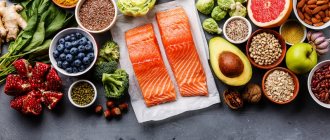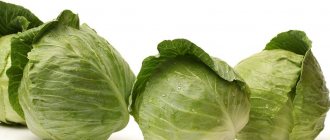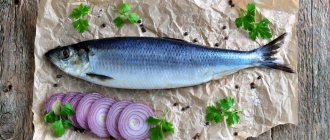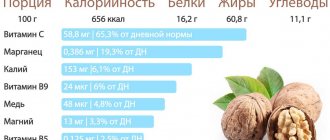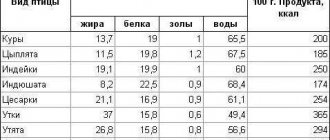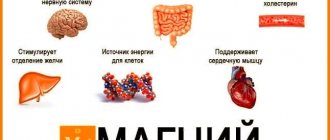Seeds
Seeds are tiny nutritional powerhouses. Some contain calcium, such as poppy seeds, sesame seeds, celery and chia seeds.
For example, 1 tablespoon (15 grams) of poppy seeds contains 126 mg, or 13% of the RDA for calcium ().
The seeds also contain proteins and healthy fats. For example, chia seeds are a rich source of plant-based omega-3 fatty acids ().
1 tablespoon of sesame seeds contains 9% of the RDA for calcium. Sesame also contains other minerals including copper, iron and manganese ().
Summary:
Several types of seeds are good sources of calcium. For example, 1 tablespoon of poppy seeds contains 13% of the RDA for this mineral.
Preservation and absorption of calcium in the body: rules of use
Calcium (containing foods and a table of rich foods are listed below), even if it is taken according to the norm, cannot guarantee sufficient saturation of the body, since it is not able to be completely absorbed. And in order for it to be assimilated as much as possible, you need to know several interesting facts.
The absorbed proportion of calcium will increase:
- when taken simultaneously with vitamin D;
- with sufficient sun exposure;
- with an increase in the menu of foods rich in vitamin D (eggs, sardines).
Phosphorus and magnesium help calcium absorption. The permissible value of phosphorus is 1.4 times less than calcium.
The optimal ratio of these 3 vitamins is:
- cottage cheese;
- greenery;
- legumes
Some foods and microelements, on the contrary, remove calcium from tissues, so their consumption should be reduced or removed from the diet completely. For example, rhubarb, coffee - due to the content of oxalic acid. It forms oxalates (insoluble salts), which settle in the discs between the vertebrae and in the bones.
To increase the proportion of calcium absorbed, it is necessary to restore the correct acidity of the stomach. Problems in the functioning of the gastrointestinal tract can occur for various reasons - surgical interventions, taking medications. A normal level of acidity allows for proper absorption of calcium in the intestines.
In order for calcium to be absorbed well, there must be coordinated work of the hormonal system: the production of growth hormone, estrogen and others.
Problems in the functioning of the pancreas, kidneys and liver reduce the absorption of calcium. They help break down and absorb the element (calcium comes in foods in the form of compounds). Also, some drugs, for example, laxatives, diuretics, are often to blame for the improper absorption of the element.
Increased physical activity contributes to the loss of calcium: it “leaks” with sweat secretions. After playing sports, you need to restore calcium, for example, drink 250 ml of low-fat dairy product. Stressful situations also contribute to the active excretion of calcium, as cortisol is produced. It affects the activity of microelement excretion by the kidneys.
The percentage of calcium absorbed is determined by what chemical composition a person consumes and when. So calcium citrate (preferred) does not depend on food intake, carbonate should be taken with meals.
Cheese
The list of foods high in calcium includes various types of cheese.
Most cheeses are excellent sources of calcium. Parmesan cheese contains the most calcium - 1184 mg (118% of the RDI) per 100 grams ().
Softer cheeses contain less of this mineral. 100 grams of brie cheese contains only 184 mg (18% of the RDI) calcium. Many other types of cheese perform averagely, providing approximately 70% of the RDI per 100 grams (, ).
It's also worth noting that the calcium present in dairy products is more easily absorbed by your body than when it comes from plant sources.
Many types of cheese are also rich in protein, such as cottage cheese. Aged hard cheeses contain little lactose, making them more suitable for people with lactose intolerance.
In addition, dairy products also have some health benefits. Recent research suggests that dairy products may reduce the risk of developing cardiovascular disease ().
Another study found that eating cheese daily was associated with a lower risk of developing metabolic syndrome, which increases the risk of heart disease, stroke and type 2 diabetes ().
However, remember that full-fat cheese is high in fat and calories. Most cheeses are also high in sodium, which some people are sensitive to.
Read more about the benefits and harms of cheese here - Cheese: benefits and harms for the human body.
Summary:
100 grams of Parmesan cheese provides the human body with 118% of the RDA for calcium. Although cheese is high in fat and calories, eating it may actually reduce your risk of developing heart disease.
What is calcium and why is it important?
Calcium is a mineral that the body needs for many functions, including building and maintaining bones and teeth, blood clotting, transmitting nerve impulses, and regulating heart rate. About 99% of calcium in the body is stored in bones and teeth, the remaining 1% is found in blood, muscles and other tissues.
Experts emphasize the importance of consuming enough calcium. The general recommendation is about 1,000 mg per day for adults 19 to 50 years of age . This amount is optimal to maintain normal body function and also reduce the risk of osteoporosis, a condition that makes bones weak and brittle.
According to a Harvard University study, the body gets the calcium it needs in two ways.
- The first is to eat foods or supplements that contain calcium.
- The second is to extract calcium reserves from the body, primarily from the bones. This is done to restore the level of the mineral in the blood and support body functions that depend on calcium. Borrowing from bones occurs “on credit”: if a sufficient amount of the mineral subsequently enters the body, bone tissue is restored.
However, if a person's diet is low in calcium, the process of bone loss continues. This is why osteoporosis occurs even in young people.
Since there is very little of the mineral in the blood, a blood test for calcium would not be the best option. You can donate blood and monitor the level of parathyroid hormone , an increase in which indicates a deficiency of this microelement.
Yogurt
Yogurt is an excellent source of calcium. Many types of yogurt are also rich in live probiotic bacteria, which have many health benefits.
One cup (245 grams) of regular yogurt contains 30% of the RDA for calcium. It also contains vitamin B2, phosphorus, potassium and vitamin B12 ().
Low-fat yogurt may contain even more calcium—about 45% of the RDA in one cup ().
While Greek yogurt is an excellent source of protein in your diet, it provides less calcium than regular yogurt ().
One study linked eating yogurt to improved overall diet quality and improved metabolic health. Subjects who consumed yogurt had lower risks of developing metabolic diseases such as type 2 diabetes and cardiovascular disease ().
Read more about the benefits of yogurt here - Yogurt: benefits and harm to the body.
Summary:
Yogurt is one of the best sources of calcium, providing the human body with 30% of the RDA for calcium per cup. It is also a good source of protein and other nutrients.
What products contain
Before we talk about them, let's talk about the conditions under which Ca will be absorbed best. Let us immediately note what blocks the breakdown processes: food containing oxalic acid. If you eat it and at the same time consume cottage cheese, milk, kefir, you will face the problem of sparingly soluble salts, which can remind you of urolithiasis and are deposited in the intervertebral discs.
It is useful to combine foods containing large amounts of calcium with fatty acids. However, certain precautions must be observed: do not get carried away. Why? The problem is that both a lack and an excess of fat in the body negatively affect the absorption of an important macronutrient - it slows down.
Another tip: add foods rich in vitamin D to your menu. This is another helper of Ca, which helps it get into cells and take part in a number of complex processes. It can be formed under the influence of sunlight, but it is also necessary to obtain it from the diet. Here are the foods that contain calciferol:
- Eggs are one of the simplest and most accessible sources. The concentration of the beneficial substance is especially high in the bright yolk. However, eating too many eggs is harmful because they are high in cholesterol.
- Beef liver is another guest on our table, which contains vitamin D, which helps in the absorption of Ca. And the liver also contains iron and protein - a new argument in favor of inclusion in the diet.
- Soy milk - a cup of this drink has a high content of calciferol. It also contains incredibly useful vitamin C.
- Tuna, salmon - these types of fish are rich not only in the “sun” substance, but also in polyunsaturated fatty acids - a good help for the complete absorption of calcium.
Also, don’t forget about magnesium and phosphorus - they are also vital for obtaining an important macronutrient in full. There are many of them in all kinds of beans, whole grain bread, soybean curd, and cocoa.
Now let's turn to foods that are high in calcium and have great benefits for our health.
- Green leafy vegetables – cabbage comes first. You can safely add Beijing, broccoli, Brussels sprouts to your diet - the treasured Ca will be there everywhere.
- Nuts - you didn’t know, but they also contain building material for nails, teeth, and bones. By the way, they perfectly help the absorption of macronutrients. We all know that these fruits contain a lot of fat under the hard shell. That's what we need. Record holders for the content of useful macronutrients are Brazil nuts and almonds.
- Various seeds - if you were looking for which foods contain calcium and are richest in it, and expected to see only milk and cottage cheese on the list, you will be surprised, because even poppy and sesame seeds contain this valuable substance. You can add them to healthy baked goods made from amaranth flour, and if you are fasting, they will make good milk.
- Wheat – especially high in Ca in bran. But if you decide to look for a macronutrient in premium flour, you’ll just be wasting your time - it’s not there. As in white bread. It’s better to take whole grain bread or buy a good alternative to the usual crust – amaranth bread.
- Tofu - some call this product soy curd, others call it cheese. But whatever you call it, the fact remains: it contains calcium (about 105 mg per 100 g). It is also very good for those losing weight because it contains few calories.
- Molasses – one teaspoon contains approximately 170 mg Ca. This is no joke: it is also found in sweets. However, we still recommend choosing the beneficial combination of maltodextrin and stevia extract over thick starch syrup.
Also, do not forget about cottage cheese, milk, yogurt, kefir. These are the main sources of useful macronutrients on your table. Lactose, which is part of these components of a healthy diet, helps the valuable substance to be quickly and fully absorbed.
So, we found out which foods contain calcium, and gave a list to explain exactly where it is found. Many discoveries can be called unexpected: it is difficult to imagine that the building material for bones and teeth is found in herbs or seeds. There is a lot of it in figs, green beans and even turnip leaves.
Watercress, savoy cabbage, pistachios, shrimp - all these are irreplaceable sources of Ca in our diet. Below is a table listing foods that contain large quantities of calcium. Check yourself: are they all on your table?
Even if you don’t eat all of the above regularly, there is no reason to worry if you regularly drink a glass of kefir or milk, often buy cottage cheese, red fish, and like green vegetables. In this case, all you have to do is ensure that the macronutrient that enters your body is absorbed correctly. We have already told you which combinations are preferable.
It is not difficult to guess that Ca should help us not only throughout life, but also when life is just beginning. This is exactly what we will talk about next.
Yogurt
Yogurt is an excellent source of calcium. Many types of yogurt are also rich in live probiotic bacteria, which have many health benefits.
One cup (245 grams) of regular yogurt contains 30% of the RDA for calcium. It also contains vitamin B2, phosphorus, potassium and vitamin B12.
Low-fat yogurt may contain even more calcium—about 45% of the RDA in one cup.
While Greek yogurt is an excellent source of protein in your diet, it provides less calcium than regular yogurt.
One study linked eating yogurt to improved overall diet quality and improved metabolic health. Subjects who consumed yogurt had lower risks of developing metabolic diseases such as type 2 diabetes and cardiovascular disease.
Yogurt is one of the best sources of calcium, providing the human body with 30% of the RDA for calcium per cup. It is also a good source of protein and other nutrients.
Milk
240 ml of whole cow's milk contains 276 mg of useful mineral, and skim milk contains 352 mg. The same serving of goat milk contains even more calcium - 327 mg.
See Also News
Estonia is one step closer to banning fur production
Calcium in milk is well absorbed due to the high content of vitamin D - natural or specially added by the manufacturer of the product. Milk is also a source of protein and vitamin A.
Rhubarb
Rhubarb contains high amounts of fiber, vitamin K, calcium and smaller amounts of other vitamins and minerals. It contains prebiotic fiber, which can promote the development of beneficial bacteria in the gut.
Both spinach and rhubarb are high in oxalates, so much of the calcium is not absorbed. One study showed that our body is able to absorb only a quarter of the total amount of this mineral present in rhubarb.
On the other hand, the amount of calcium in rhubarb is quite high. So even if you only absorb a quarter, that would be 90mg per 250g serving of cooked rhubarb.
Rhubarb is high in fiber, vitamin K and other nutrients. The calcium contained in rhubarb may not be completely absorbed, but despite this you still get a significant amount of it.
Mushrooms
They do not contain calcium or contain a very small amount - 0-18 mg.
Soybeans
For those who do not eat meat and dairy products, soy has become a real salvation. It is a source of vegetable protein, which is rich, among other things, in calcium. Pay special attention to tofu and other soy products now, during fasting, to ensure that the body gets enough calcium and protein.
Eggshell
The shell consists of 90–95% calcium carbonate, so a healthy food supplement is prepared from it. You can buy eggshell powder at a pharmacy or make it yourself. Eggs must be washed and boiled, the shells removed from films, and thoroughly crushed in a blender or coffee grinder. The finished powder is mixed with lemon juice or acid to produce calcium citrate, a compound that is easily digestible and suitable for children and the elderly. The daily norm is a teaspoon of the mixture.
Amaranth
Amaranth is an incredibly nutritious pseudograin that is a good source of folic acid and is very rich in several minerals, including manganese, magnesium, phosphorus and iron.
A 250 gram serving of cooked amaranth provides your body with 117 mg of calcium, which is 12% of the RDI.
Amaranth leaves contain even more calcium - a 130 gram serving of cooked amaranth leaves contains 275 mg of calcium, which is 28% of the RDI. The leaves also contain very high amounts of vitamins A and C.
Summary:
Amaranth seeds and leaves are very nutritious. A 250 gram serving of boiled amaranth seeds provides the human body with calcium at 12% of the RDI.
Figs
Dried figs are rich in antioxidants and fiber. Compared to other dried fruits, it also contains more calcium. In fact, 100g of dried figs contains 162g of calcium, which is 16% of the RDI.
In addition, figs also provide the body with a decent amount of potassium and vitamin K.
Dried figs contain more calcium than other dried fruits. When you consume 100 g of dry figs, you get 16% of the daily value of this mineral.
Seaweed
| No. | Name of herbal product | Amount of calcium contained in the product (per 100 g) |
| 1. | Dried agar | 625 mg |
| 2. | Raw agar | 54 mg |
| 3. | Purple | 70 mg |
| 4. | Sea kale | 168 mg |
| 5. | Carrageen (Irish moss) | 72 mg |
| 6. | Undaria pinnate (wakame) | 150 mg |
| 7. | Dried spirulina | 120 mg |
| 8. | Raw spirulina | 12 mg |
Spices and herbs
| No. | Name of herbal product | Amount of calcium contained in the product (per 100 g) |
| 1. | Fresh thyme | 405 mg |
| 2. | Dried spearmint | 1488 mg |
| 3. | Ground black pepper | 443 mg |
| 4. | Ground savory | 2132 mg |
| 5. | Fresh coriander | 68 mg |
| 6. | Dried marjoram | 1990 mg |
| 7. | Fresh parsley | 138 mg |
| 8. | Dried thyme | 1890 mg |
| 9. | Ground red pepper | 148 mg |
| 10. | Dried dill | 1784 mg |
| 11. | Fresh curly mint | 199 mg |
| 12. | Celery seeds | 1767 mg |
| 13. | Fresh dill | 208 mg |
| 14. | Ground sage | 1652 mg |
| 15. | Ground white pepper | 265 mg |
| 16. | Dried oregano (oregano) | 1597 mg |
| 17. | Grape leaves | 363 mg |
| 18. | Dill seeds | 1515 mg |
| 19. | Ground cloves | 632 mg |
| 20. | Dried cilantro | 1246 mg |
| 21. | Cumin seeds | 689 mg |
| 22. | Fennel seeds | 1196 mg |
| 23. | Coriander seeds | 709 mg |
| 24. | Dried parsley | 1140 mg |
| 25. | Bay leaf | 834 mg |
| 26. | Dried tarragon | 1139 mg |
| 27. | Ground cinnamon | 1102 mg |
Canned salmon and sardines
Canned sardines and salmon are calcium-rich foods thanks to their edible bones. 100 grams of canned sardines provides the body with 38% of the RDI, and 100 grams of canned salmon with bones provides us with 25% of the RDI (,).
These fatty fish also provide high-quality protein and omega-3 fatty acids, which are good for the heart, brain, and skin (,).
While seafood may contain mercury, small fish such as sardines have low levels of this harmful substance. Not only that, both sardines and salmon have high levels of selenium, a mineral that can counteract mercury toxicity ().
Summary:
Canned sardines and salmon are very healthy choices. A 240 gram can of sardines supplies our body with calcium at 91% of the RDA.
Daily value of calcium
- Children under 3 years old - 600 mg
- Children from 4 to 10 years - 800 mg
- Children from 10 to 13 years old - 1000 mg
- Adolescents from 13 to 16 years old - 1200 mg
- Youth 16 and older - 1000 mg
- Adults from 25 to 50 years - from 800 to 1200 mg
During pregnancy
Lack of calcium during pregnancy can lead to the development of gestosis - a dangerous disease accompanied by high blood pressure, leading to impaired fetal development in the third trimester of pregnancy, as well as to the destruction of teeth and bones, and is accompanied by muscle cramps, swelling, and hair loss.
In cases where calcium from food is not properly absorbed, calcium single preparations, combined calcium preparations with vitamin D, magnesium and zinc, or multivitamins with a complex complex of microelements are prescribed.
In old age
After 50 years of age, the risk of developing osteoporosis increases, a disease that causes a decrease in the mass and density of bones, which become brittle and prone to frequent fractures as a result of a lack of calcium. To prevent osteoporosis it is necessary:
- use a calcium diet;
- engage in physical exercise to maintain stress on the bones, stimulating mineralization;
- take vitamin complexes;
- reduce the amount of table salt;
- reduce meat consumption, as the mineral is used in the process of protein breakdown.
Legumes
Legumes such as beans and lentils contain significant amounts of fiber, protein and micronutrients. They also boast high amounts of iron, zinc, folic acid, magnesium and potassium. Some varieties are also rich in calcium.
Winged beans have the highest amount of calcium among legumes. A 200 gram serving of cooked winged beans contains 184 mg of calcium, which is 18% of the RDI ().
White beans are also a good source of calcium - a 200g serving of cooked white beans contains 146mg of this mineral, which is 14% of the RDI. Other beans and lentils contain lower amounts of this mineral - 4-6% of the RDI per serving (, ,).
Research shows that legumes may help lower LDL cholesterol ("bad cholesterol") and reduce the risk of developing type 2 diabetes ().
Summary:
Legumes are highly nutritious, and one 200 gram serving of cooked winged beans provides 24% of the RDA for calcium.
Products containing large quantities of calcium: table
Calcium-containing foods, the table of which is given below, are absorbed by the body by 45%. Therefore, the diet must compensate for these losses.
| Product name | Calcium content | Norm per day |
| Eggshell | 5 g of crushed shells contains 2 g of calcium | ½ tsp. ground into flour |
| Parmesan and other cheeses | 100 g Parmesan contains 1.2 g calcium | 100 g |
| Sesame seeds (leaders in plant sources) | 100 g of seeds contain 1.2 g of calcium | 100 g |
| Oil sardines (calcium-rich sardine bones) | 100 g of product contains 0.4 g of calcium | 150-200 g |
| Soybeans | 100 g of boiled soybeans contains 0.4 g of calcium | Consume as desired |
| Almond | 100 g of product contains 0.28 g of calcium | 200 g will be enough, since the product is high in calories |
| Parsley | 100 g parsley contains 0.25 g calcium | Parsley is rarely used as a separate dish; an excellent option is adding it to salads and ready-made dishes. |
| Garlic | 100 g of garlic contains 0.18 g of calcium | Add to food or eat separately – 400 g |
| Milk | 100 g of milk contains 0.13 g of calcium | An individual approach to establishing the norm, since lactase deficiency is common (lack of ability to digest lactose, an important and main element of milk), which can lead to digestive problems |
| Hazelnut | 100 g of nuts contains 0.13 g of calcium | You need to consume more than an average handful per day and do not forget about the high calorie content of the nut |
Almond
Among all nuts, almonds are the richest in calcium. Just 100 g of almonds contain 266 mg of calcium, which is 27% of the RDI ().
This same amount of almonds also provides almost 12 grams of fiber, as well as healthy fats and protein. These nuts are an excellent source of magnesium, manganese and vitamin E.
Eating nuts may help lower blood pressure, reduce body fat and other risk factors for metabolic diseases ().
You can learn more about the beneficial properties of almonds on this page - Almonds: benefits and harm for the human body.
Summary:
Almonds contain a large amount of nutrients such as healthy fats, protein, magnesium and others. Eating just 100 grams of almonds provides our body with 27% of the RDA for calcium.
Calcium in foods of animal origin. Tables of contents per 100 g.
After cheese, canned fish is the best animal source of calcium, largely due to the fact that it is consumed together with bones. Fatty fish (herring, pike perch, perch, etc.), fish roe and seafood, in addition to calcium, will also provide your body with high-quality protein and healthy fats. However, seafood should not be overused, since it contains quite a lot of mercury.
Which fish has more calcium?
Table 3. Calcium in food: fish and seafood
Calcium in meat: beef, pork and poultry
Red meat contains the most calcium, especially beef and veal. The amount of mg of calcium per 100g may vary slightly depending on which part you choose for lunch. Also, the numbers can be influenced by the age of the animal, the degree of its fat content and in what conditions it was raised. The table below shows averages for the three most common types of meat products on the market.
How much calcium is in chicken eggs? Table of contents per 100 g
Another animal source of calcium in food is eggs. In fact, only egg yolks and powdered eggs contain large amounts of calcium. Eating two scrambled eggs for breakfast will only give you about 60 mg of calcium.
Whey Protein
Whey protein is found in milk, and its health benefits are currently being widely studied. It is an excellent source of protein that is full of quickly digestible amino acids.
In several studies, researchers have linked whey protein intake to weight loss and improved blood sugar control ().
Whey is also extremely rich in calcium. One 28-gram scoop of whey protein isolate powder contains 200 mg of calcium, which is 20% of the RDI ().
Summary:
Whey protein is an exceptionally healthy source of protein. A scoop of whey protein powder contains 20% of the RDA for calcium.
Daily value for children, adults
Calcium-containing foods (tables with the proportion of calcium in foods are listed below) should be consumed in doses of 0.8 g (adults). If a woman is pregnant, her norm per day cannot be less than 1 g, and so the norm differs for different categories of people.
The need for an element increases when:
- pregnancy and breastfeeding;
- increased sweating;
- working with harmful substances (for example, fertilizers and chemical compounds);
- active lifestyle and playing sports at least 3 times a week or professionally.
Distinctions on calcium intake for different groups of people:
| Groups of people | Daily requirement depending on age |
| Women |
|
| Pregnancy and lactation |
|
| Men |
|
| Children under one year old |
|
| Children over 11 months |
|
Calcium-containing foods (a table indicating the amount of calcium in food will help avoid excess) are important for the full and proper functioning of the body.
But a high content of the element in the body can cause the appearance of:
- neoplasms;
- dizziness;
- severe weakness.
There are many foods available to people that will help meet their daily calcium requirement.
Some leafy vegetables
Dark leafy vegetables are incredibly healthy, and some of them are also high-calcium foods. Calcium-rich dark green leafy vegetables include various types of cabbage, greens (parsley, dill) and spinach.
For example, a 250-gram serving of cooked dark green leafy vegetables contains 350 mg of calcium, which is 35% of the RDI (RDA).
Please note that some varieties contain high levels of oxalates. These are natural compounds that bind to calcium, making some of it unavailable to your body.
Spinach is one such food. Therefore, despite the high calcium content of spinach, it is less available than that found in low-oxalate vegetables such as kale and leafy greens.
Summary:
Some dark leafy vegetables and greens are rich in calcium. One 250 gram serving of cooked leafy vegetables provides 35% of your daily requirement.
Antioxidants
The calcium in bananas helps prevent kidney cancer. However, in addition to calcium, bananas contain a lot of antioxidants that prevent the occurrence of all types of cancer.
Can a nursing mother eat bananas?
“Can a nursing mother have bananas?” is one of the most common questions women ask when giving birth. This is no coincidence, since banana is a citrus fruit that is famous for being a strong allergen. Consequently, all citrus fruits are prohibited for a nursing mother, so as not to provoke colic, irritation and allergies in the baby. However, bananas are an exception! Bananas are suitable for nursing mothers, since they contain practically no acids that can irritate the intestines of a newborn. Bananas are necessary for nursing mothers, if only because they are able to compensate for the lack of vitamins (C, E, B6) necessary for life and microelements (calcium, phosphorus, potassium, magnesium, iron) formed during breastfeeding, since all reserves of useful substances are lost with milk for the baby. Bananas help support the immune system due to the vitamin C they contain, regulate intestinal function thanks to potassium, and also, due to the special substance tryptophan, help women fight postpartum depression and mood swings.
The only point is to enjoy bananas in doses, gradually introducing them into your diet after childbirth, carefully watching your child. If your child does not have allergies, then eat a ripe banana a day - and everything will be fine.
Rhubarb
Rhubarb contains high amounts of fiber, vitamin K, calcium and smaller amounts of other vitamins and minerals. It contains prebiotic fiber, which can promote the development of beneficial bacteria in the gut ().
Both spinach and rhubarb are high in oxalates, so much of the calcium is not absorbed. One study showed that our body is able to absorb only a quarter of the total amount of this mineral present in rhubarb ().
On the other hand, the amount of calcium in rhubarb is quite high. So even if you only absorb a quarter, that would be 90mg per 250g serving of cooked rhubarb ().
You can learn more about the beneficial properties of rhubarb on this page - Rhubarb: benefits and harm to the body.
Summary:
Rhubarb is high in fiber, vitamin K and other nutrients. The calcium contained in rhubarb may not be completely absorbed, but despite this you still get a significant amount of it.
Why else do you need calcium?
Before we get into the calcium content tables in foods, the body needs calcium not only for healthy bones and teeth, but also for:
- Contractions of all muscles, including the heart. When a nerve stimulates a muscle to contract, calcium is released to help proteins in the muscle perform that contraction.
- Nerve signal transmission. Calcium helps carry messages between the brain and every part of the body.
- Normal functioning of blood vessels and blood clotting.
- Releases many hormones and enzymes that affect almost every function in the human body.
If the body does not have enough calcium to perform all these functions, then it begins to take it from the “reserve”, which is our bones and teeth. Therefore, diseases of the teeth and bones are a sure sign of insufficient intake of calcium or vitamin D. The latter, in turn, plays an important role in the absorption of calcium itself (read on “Forest Fairy”, where foods contain vitamin D).
Fortified products
Another way to get enough calcium is to eat foods fortified with this mineral. Some grains can contain up to 1,000 mg of calcium (100% of the RDA) per serving, and that doesn't include added milk.
However, keep in mind that your body cannot absorb all of this calcium at once, and it is best to spread your intake over several servings and consume it throughout the day ().
Flour and cornmeal can also be fortified with calcium. That's why some breads, tortillas, and crackers contain high amounts of this mineral.
Summary:
Grain-based foods can be fortified with calcium. Read labels to find out how much calcium is in fortified foods.
Sesame seeds
So, the first and most useful thing for replenishing calcium is sesame seeds:
Sesame comes in different colors from white to black; I see mostly creamy-yellowish sesame on sale.
It has a rather pleasant nutty, slightly bitter taste.
How can you eat it? The first method is “As it is”: fill it with water for several hours (1-2), wash what comes out in a sieve and eat it, just chew it thoroughly.
True, you can’t eat much “as is”, since it is quite bitter, but in the form of milk it’s a completely different matter.
Amaranth
Amaranth is an incredibly nutritious pseudograin that is a good source of folic acid and is very rich in several minerals, including manganese, magnesium, phosphorus and iron.
A 250 gram serving of cooked amaranth provides your body with 117 mg of calcium, which is 12% of the RDI ().
Amaranth leaves contain even more calcium - a 130 gram serving of cooked amaranth leaves contains 275 mg of calcium, which is 28% of the RDI. The leaves also contain very high amounts of vitamins A and C ().
Summary:
Amaranth seeds and leaves are very nutritious. A 250 gram serving of boiled amaranth seeds provides the human body with calcium at 12% of the RDI.
The role of calcium in the body
The share of the element in the total mass of a person is small - only 1%. But if you isolate human bone matter separately, it consists of 99% calcium.
Calcium promotes:
- formation and strengthening of bones and teeth;
- stimulation of nervous tissue;
- normal muscle contraction, including heart muscles;
- removing heavy metals from the body (at the same time eliminating stress);
- blood clotting;
- anti-inflammatory effects;
- breakdown of carbohydrates.
Edamame and Tofu
Foods that contain large amounts of calcium include edamame and tofu.
Edamame is soybeans in a pod. One 150 gram serving of edamame contains 10% of the RDA for calcium. This popular Japanese snack is also a good source of protein and meets your daily requirement of folic acid ().
Tofu with added calcium sulfate also has exceptionally high amounts of this mineral. You can get 86% of the RDI by consuming just half a bowl (126 g) of this product ().
Summary:
Tofu and edamame are rich in calcium. Just half a bowl of tofu cooked with calcium sulfate has 86% of the RDI.
Vitamin salad of white cabbage and broccoli
- We cut the onion into half rings , preferably red, but this is not important. Place the onion in a bowl, rinse it several times with cold water, pour in lemon juice and honey, pepper with hot red pepper and let it stand while we make the salad.
- Finely chop young (loose) white cabbage , leaves only, sprinkle a little sea salt on top, squeeze the cabbage with your hands so that it gives a little juice, softens and salts. Place in a deep bowl.
- Finely chop the broccoli - both the stem and the leaves, raw, not boiled. As it is! Put it in a bowl.
- Finely chop the tomatoes into squares.
- We cut the garlic (if you like it spicier), but this is not for everybody and is optional.
- Finely chop 1 bunch of dill .
- In a separate bowl, mix lemon juice , about half a lemon and honey. Stir until the honey is completely dissolved, then add more hot red pepper. You can mix it all with a blender.
- Then we put it in a bowl with the cabbage - first the broccoli, then the tomatoes, then the onions, garlic, dill and pour it all over with sunflower oil and our lemon juice.
- Mix everything with your hands so that the sauce covers the entire salad.
- Throw a good pinch of raw sunflower seeds on top.
Sources
- https://myhandbook.com/gde-iskat-kalcij-v-rastitelnyx-produktax/
- https://zen.yandex.ru/media/id/5a0c331186516515bab4e163/5daafc643639e600af7a4761
- https://zabolevanija.net/produkty-s-vysokim-soderzhaniem-kaltsiya/
- https://aif.ru/food/diet/zdorovye_kosti_v_postnye_dni_rastitelnye_istochniki_kalciya
- https://foodismedicine.ru/15-produktov-soderzhashhih-kaltsij-v-bolshom-kolichestve/
- https://foodformula.ru/pitanie/top-10-rastitelnyh-istochnikov-kaltsiya/
- https://BestLavka.ru/tablica-soderzhanija-kalcija-v-rastitelnyh-produktah/
- https://kerimovanatalia.ru/kalciy-rastitelnogo-proiskhozhdeniya/
[collapse]
Fortified drinks
Even if you don't drink milk, you can still get calcium from fortified non-dairy drinks. A cup of fortified soy milk has 30% of the RDA for calcium. Soy milk contains 7 g of protein, making it very similar to traditional cow's milk ().
Other nut and seed based milks may be fortified with even higher levels of calcium. However, it is not only plant-based dairy products that are fortified. Orange juice can also be fortified, providing your body with up to 50% of the RDA for calcium per glass ().
Summary:
Plant-based milk and orange juice can be fortified with calcium. A cup of fortified orange juice can provide your body with half your daily calcium requirement.
Sesame milk
- Fill 1 glass of sesame seeds with clean water overnight, so that the water completely covers it.
- In the morning, we wash the sesame seeds, drain the water in which they were standing, and blend them in a blender with 2-3 glasses of clean (not tap) water. Add a few dates (for sweetness) and one banana.
- Do not add sugar under any circumstances, as it will interfere with the absorption of calcium from sesame seeds.
- Then strain the milk through cheesecloth and squeeze out everything that comes out. If you don't strain it, it will taste bitter.
The resulting liquid is sesame milk. We drink as much as we want, and store the rest in the refrigerator for 1-2 days maximum.
IMPORTANT: Always ask sellers for raw sesame seeds.
It is often sold already fried. If sesame is roasted, it becomes oily to the touch and darkens to a creamy brown color.
Roasted sesame is not suitable for soaking and cooking; after heating, all its beneficial substances change their original essence.
Of course, roasted sesame is much tastier than raw sesame, but it has zero benefits.
This is what soaked and washed sesame seeds and my sesame milk look like!
Figs
Dried figs are rich in antioxidants and fiber. Compared to other dried fruits, it also contains more calcium. In fact, 100g of dried figs contains 162g of calcium, which is 16% of the RDI ().
In addition, figs also provide the body with a decent amount of potassium and vitamin K.
Summary:
Dried figs contain more calcium than other dried fruits. When you consume 100 g of dry figs, you get 16% of the daily value of this mineral.
You can learn more about the beneficial properties of figs on this page - Figs: benefits and harm to the body.
Rose hip
In addition to sesame, I recommend that you eat more rose hips. Not only does 100 grams of rosehip contain 257 mg of calcium, it is the most powerful source of vitamin C - 425 mg with a daily requirement of 95 mg!
It is most beneficial to drink rosehip infusion in cold water.
Why cold?
Because if you pour hot water over rose hips, you can forget about calcium and, especially, vitamin C, both will die.
Milk
Cow's milk is one of the best and cheapest sources of calcium. One cup (250 ml) of cow's milk contains 276-352 mg of calcium, depending on whether the milk is whole or skim. Calcium in dairy products is also well absorbed (,).
In addition, milk is a good source of protein, vitamin A and vitamin D.
Goat's milk is another excellent source of calcium, providing your body with 327 mg per cup ().
Summary:
Milk is an excellent source of highly absorbable calcium. A cup of milk provides the human body with 27 - 35% of the daily requirement of this mineral.
Green smoothies
Green smoothies are a discovery in themselves!
They were first invented by Victoria Butenko, a raw foodist with 12 years of experience. She had been looking for a long time for a method by which she could eat a lot of greens, since greens are one of the healthiest foods on Earth for humans.
Here we consider greens as a source of calcium; let me remind you which greens contain calcium:
- 100 grams of basil contain 370 mg of calcium,
- 100 g parsley – 245 mg
- 100 g of celery – 240 mg
- 100 g dill – 223 mg
- 100 grams of watercress – 180 mg
Mix all this in smoothies with fruits or berries and you will get a wonderful vitamin drink that is full of calcium.
Green smoothie recipe
- We take 4 small bunches - 2 parsley, 2 dill, two celery sprigs (you can throw them in the form of greens, if you have them), put them in a blender.
- Add some kind of fruit, I like bananas and oranges, if desired, it can be grapefruit or something else.
- So, put 3-4 bananas and 1 peeled orange into the blender
- Add 1-1.5 glasses of water
- Mix everything in a blender for at least 2 minutes.
- If you do everything like I did, you will get about 1 liter of cocktail.
- Believe me, it's very tasty!
Summarize
Calcium is an important mineral that you may not be getting enough from your diet.
While dairy products tend to have the highest levels of calcium, there are also many other good plant foods that contain this mineral in high quantities.
You can easily meet your calcium needs by eating foods from this varied list.
The article was prepared by experts for informational purposes only. It should not be used as a guide for treating medical conditions and is not a substitute for professional medical advice, diagnosis, or treatment. In case of illness or any symptoms, you should always consult a doctor and not self-medicate.
Tags: Calcium
About the author: Anastasia Sheveleva
Candidate of Medical Sciences, doctor of the highest category, therapist, registered dietitian, nutrition consultant. More about the author.
- Related Posts
- What can you substitute for cornstarch in recipes?
- Can you eat raw pumpkin?
- Foods high in starch: list
« Previous entry
What is calcium needed for?
The mineral is necessary for humans because:
- helps strengthen bones;
- maintains healthy teeth and hair;
- participates in metabolic processes;
- promotes the absorption of microelements;
- helps transmit nerve impulses;
- participates in the processes of blood clotting, cell synthesis and muscle contraction;
- increases immunity;
- reduces allergic reactions;
- accelerates damage recovery.
“Everything is poison, everything is medicine. Only the dose makes him both.”
– Paracelsus
The lack of this important element can lead to very serious consequences, such as:
- Deterioration of the condition of the skin, hair, nails and teeth. Skin problems such as eczema and psoriasis may occur. Nails become dry and split. Teeth may become brittle and yellow. Sometimes periodontal disease may develop.
- The occurrence of dysphagia (difficulty swallowing).
- Paresthesia – numbness and tingling of fingers and toes, decreased sensitivity, memory problems, and in severe cases, hallucinations.
- Decreased immunity.
- Irritability, depression and insomnia.
- Cramps in the limbs, occurring mainly at night. This may be one of the first symptoms of deficiency.
However, you should not rely on calcium supplements and foods high in calcium without any measure. An excess of this element can also lead to negative consequences, such as:
- Decreased physiological activity due to dehydration of connective tissue cells.
- Development of renal colic and urolithiasis.
- Thickening of blood and increased coagulability, increased thrombus formation.
- Heart attacks and strokes may occur.
- Alkalinization of blood and oxygen starvation.
- Increased excitability of the nervous system.
- Development of heart failure.
- Disruption of muscle tissue.
Academician of the Odessa Regional Academy of Sciences Nikolai Grigorievich Druzyak in his outstanding book “How to Extend a Fleeting Life” describes a study of the phenomenon of longevity and comes to the conclusion that calcium should be consumed very moderately, and even limited. He gives the following figures: the physiological need for calcium is about 400 mg/day for an adult. “Healthy nerves and good character are a consequence of low levels of calcium in the blood,” says the scientist.
Main food groups containing large amounts of calcium
Calcium and its deficiency are compensated not only by newfangled vitamins. Sometimes it is sufficient to consume foods rich in the element.
Calcium containing foods: table of mineral sources.
The tables will clearly show the proportion of calcium in individual products and help meet individual needs.
Hard cheeses
The composition of hard cheeses is balanced with calcium and phosphorus. And in terms of element content, they are considered record holders among products.
Cheese should be in the diet because:
- prevents osteoporosis;
- necessary for strengthening teeth and bones;
- Eating cheese is especially important for children and teenagers, since during this period the body may experience a lack of calcium;
- ensures the growth of the baby's bone tissue during pregnancy and lactation.
Nuts, seeds
There is an opinion that dairy products contain calcium more than others. It's a delusion! Certain types of nuts and seeds are not inferior to milk and its components according to this criterion, and sometimes even exceed them.
In addition, they are rich:
- fiber;
- protein;
- microelements;
- amino acids.
Almonds are the richest nut in terms of calcium content. It is also rich in other microelements, which has a beneficial effect on the heart and blood vessels.
Sesame seeds contain more calcium than cottage cheese. And calcium from this product is absorbed better.
Fish and seafood
Experts recommend consuming canned fish:
- tuna;
- sprat;
- sardines.
Since it can be eaten with bones, the proportion of calcium increases significantly. 100 g of sardines contain 0.4 g of calcium. Fish cannot be considered the richest product in terms of microelement composition, but it is worth highlighting that due to the high content of vitamin D, calcium is perfectly absorbed from it.
In addition to different types of fish, the sea offers its own products enriched with calcium:
- seaweed;
- shrimps;
- oysters
Vegetables, greens
Vegetables and greens are considered excellent sources of saturating the body with calcium.
The menu should include:
- seaweed;
- leaf salad;
- carrot;
- cauliflower.
Experts equate a glass of milk to 30 g of any of the listed greens in terms of calcium saturation. When replenishing calcium in the body, it is worth keeping in mind that oxalic acid in many vegetables and herbs prevents complete absorption of the mineral. To do this, it is recommended to boil vegetables before eating, for example, carrots and beets.
Legumes
Legumes are also rich in calcium. For example, 100 g of beans contains the same amount of calcium as half a glass of milk. In addition, it is rich in fiber. But the element in these products is partially absorbed, that is, the consumption of the product should be increased more than the established norm.
Dairy
Dairy products are the leaders in consumption among calcium-containing products. They are rich in this microelement and promote good absorption. For example, 1 glass of milk contains 0.3 g of calcium, which provides 1/3 of the daily requirement.
Cottage cheese is rich in calcium - 100 g of this dairy product contains 0.15 g of the element.
Yogurt is optimally rich in calcium, so children should definitely consume it. All varieties of milk-containing products should take their rightful place in the nutrition of adults and children, since they are optimal in content and absorption of the element.
Fruits and berries
Berries and fruits contain little calcium, but are recommended for their ability to increase the absorption of the element.
Fruits worth eating include:
- apples;
- grape;
- peaches.
And from berries:
- currants;
- strawberries;
- gooseberry.
Dried fruits are rich in calcium, especially:
- dried apricots;
- figs;
- raisin.
Cereals
Cereals are not recognized as calcium fortified foods. The content of the element in the finished product increases due to the addition of dairy ingredients. Cereals do not contain much calcium, but ensure its proper absorption.
Meat products
Meat products are not rich in calcium, however, experts recommend consuming them. In animals, a large proportion of calcium is found in the blood, but not in the muscles.
Molasses
Blackstrap molasses is considered an unusual "parent" of calcium and is a sugar content product. It is a sweet dark brown syrup. It is not suitable for independent consumption, but is actively used as an addition to ready-made dishes. 2 tbsp. syrup contain 0.4 g of calcium, which practically corresponds to 1/2 the norm for an adult per day.
Peculiarities
We have figured out which foods contain a lot of calcium, now we need to understand how to consume these foods correctly so that there is always a sufficient amount of the substance in the body.
There are several nuances that, if observed, can significantly increase the amount of absorbed substance. You need to include foods with a sufficient amount of vitamin D in your diet, as well as be in the sun. This vitamin is involved in the deposition of calcium in bone tissue and its absorption. Often the cause of microelement deficiency is precisely the lack of vitamin D. Also, the microelement is better absorbed together with phosphorus and magnesium. It is optimal to consume foods with vitamin D 4 hours before consuming calcium. To maximize the effect of the diet, you need to exclude foods that wash away calcium, such as coffee, oxalic acid, salt, and soda. Vegetarianism is not suitable for people with calcium deficiency; the diet should be balanced. In order for microelements to be absorbed normally, it is necessary to ensure normal stomach acidity. With low acidity, calcium is simply excreted and not absorbed. For this reason, it is often recommended to combine the use of a microelement with sour juice. For normal absorption of the substance, it is very important to rid the body of endocrine diseases and establish hormonal levels. It is also necessary to consult a doctor if a deficiency of the element is observed when taking any medications, even harmless ones at first glance. It has been proven that the substance is poorly absorbed if a person is nervous, so it is necessary to avoid stress and not worry about trifles. It is also known that the substance is better absorbed in the evening and separately from iron, so it is better to eat such foods for dinner and not combine them with iron-containing foods. Share:
![Selenium [converted]-04-1.jpg](https://idiev.ru/wp-content/uploads/selen-preobrazovannyj-04-1-jpg-330x140.jpg)

